Katie Britt: Alabama is expanding the limits of human achievement

On Tuesday, U.S. Senator Katie Britt highlighted Alabama’s critical contributions to the next era of American space exploration during a recent hearing of the Commerce, Justice, Science, and Related Agencies (CJS) Subcommittee of the Senate Committee on Appropriations with NASA Administrator Bill Nelson. Britt extolled the many contributions to the advancement of space exploration made by the scientists and engineers at Marshall Space Flight Center in Huntsville. 7,000 Alabamians work at Marshall. “They have created a legacy of excellence,” Britt stated. “The men and women there have put in the work to literally take us to new heights, and we are all better for it.” On November 16, 2022, NASA successfully launched the most powerful rocket in history – the Space Launch System (SLS) – for the first time during Artemis I. Marshall’s engineers designed the SLS, and Marshall is tasked with leading the management of and testing for the SLS program. “Tens of thousands of very talented and smart people throughout the country – including in my home state of Alabama – were responsible for a flawless SLS launch,” Britt continued. “I am deeply proud of what they have accomplished, and I’m very interested in making sure we keep this momentum going.” There have been many astronauts and cosmonauts in the last 50 years, but they have all gone to the same place: low Earth orbit. Not since the Apollo missions has man ventured further out. NASA will return Americans to the Moon as early as 2025. The Artemis II mission next year will take astronauts back to Moon orbit. Artemis III will put an American back on the Moon for the first time since Apollo 17 in 1972. Artemis IV in 2028 will set the stage for NASA to continue missions to the lunar surface annually. The SLS will be used to launch a man to Mars sometime in the late 2030s if all goes well. “NASA has set a bold vision for the future, one defined by innovation and exploration throughout the heavens,” Administrator Nelson said in his testimony before the subcommittee. Sen. Britt questioned Administrator Nelson about the funding needed to keep the Artemis program on schedule and meet NASA’s lofty goals. “We have to take advantage of the progress we have made and the workforce that has been built over the years. We need to be preparing now for a more sustained cadence of launches for Artemis IV, V, and beyond,” Britt said. “There will be a new generation of boys and girls across America who look up to the Moon at night, knowing that walking its surface is not just a dream but a reality. Once again, it will be thanks to the innovation, grit, and determination of Alabamians that our nation not only expands the limits of human achievement – but quite literally grows the imagination of what one day might and will be possible.” Landing on the Moon remains a complex engineering feat. A Japanese corporation, ispace, apparently has failed in its recent effort to land two rovers on the Moon. The mission to land a Japanese-designed rover and a United Arab Emirates-built rover has failed to communicate back that it has successfully landed on the Moon. While engineers are still working on establishing communications with the lander, the assumption is that the landing has failed. Ispace would have been the first private company to successfully land a spacecraft on the Moon. Only NASA, the former Soviet Union, and China have been able to accomplish that to this point in time. Ispace has signed a contract with NASA to deliver unmanned loads of cargo to the Moon in support of NASA’s ambitious plan to return astronauts to the Moon. At this point, it is unknown how this apparent failure will impact those plans. NASA recently released its first Moon to Mars Architecture review. This is the technology that the space agency needs to accomplish its lofty mission goals in the next twenty years. China also has ambitious plans to send its astronauts to the Moon and Mars. Nelson said it is possible that China could attempt to dominate Moon exploration. “It is a fact: we’re in a space race,” Nelson told Politico. “And it is true that we better watch out that they don’t get to a place on the Moon under the guise of scientific research.” Nelson is scheduled to testify before the House Science Committee on Thursday. Katie Britt was elected in 2022. To connect with the author of this story or to comment, email brandonmreporter@gmail.com.
David Williams: With rocket launch comes a payload of red ink
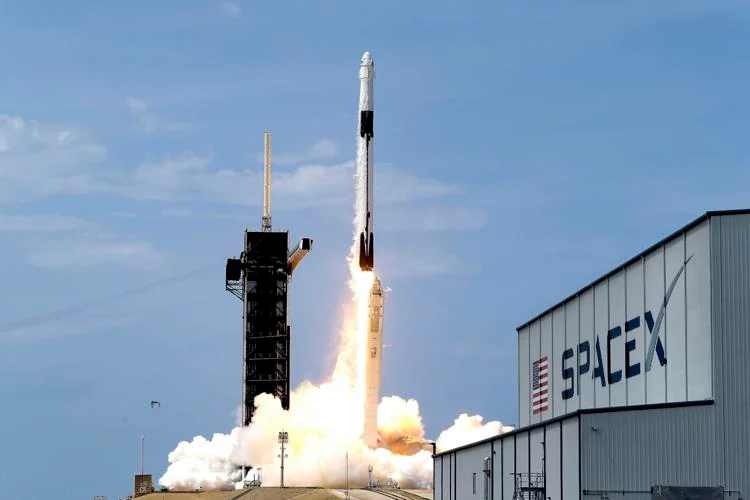
At long last, liftoff. On November 16, the Space Launch System (SLS), an immensely powerful rocket, kickstarted a weeks-long round-trip journey to the moon. So far, the Orion capsule perched on the rocket appears on track to approach and orbit the moon. When the spacecraft returns to Earth and splashes into the Pacific in December, the bipartisan backers of the lunar mission will surely hail the endeavor a success. But, the resurgent and unreserved enthusiasm for the National Aeronautics and Space Administration (NASA) reveals a critical flaw in public policy priorities. Rather than championing space exploration at any cost, lawmakers should push for cost-effective missions with private sector involvement. With $30 trillion in debt and counting, now is not the time for another black hole of wasteful spending. Even if Orion safely hurdles back to Earth, the current unmanned expedition is only one part of a larger sequence of Artemis missions. Once flight paths around the moon are adequately tested via the Orion voyage, the 5.7-million-pound SLS rocket will carry astronauts back to the lunar surface for the first time in more than half a century. The importance of the SLS rocket has certainly not been lost on appropriators. Ten years ago, prevailing opinion at America’s space agency was that the rocket would only take five years to develop and cost “only” $6 billion. Not surprisingly, development costs ballooned to $20 billion, along with a $4 billion per launch bill for taxpayers. As NASA Inspector General (IG) Paul Martin noted in a March meeting of the House Subcommittee on Space and Aeronautics, the per launch price tag is “unsustainable” and “does not include development costs required to get the Artemis program to this point in time.” SLS rocket costs are only a small quadrant in a wider galaxy of wasteful mission spending. The IG found that NASA has already spent $40 billion to get astronauts back to the moon and will likely spend nearly $100 billion total on the endeavor. Even if this mission is “successful” and astronauts manage to build a lunar base and conduct research free from harm, the goalposts for manned missions will shift at taxpayers’ expense. Combined mission (and settlement) costs to the moon and Mars could easily rival interest payments on the debt – which are projected to grow significantly due to rising expenditures and climbing interest rates. The exorbitant space exploration bill could be justified if mankind was mired in a sci-fi dystopia and had to leave the Earth pronto. If policymakers got their heads out of the clouds, though, they’d realize that robotic exploration can complete missions at a fraction of manned exploration costs. Cambridge cosmology and astrophysics professor and astronomer royal Martin Rees rightly notes, “the practical case (for human spaceflight) gets weaker and weaker with every advance in robotics and miniaturization.” NASA seems to agree: “[r]obots don’t need to eat or sleep or go to the bathroom. They can survive in space for many years and can be left out there – no need for a return trip!” And prolonged human forays into space are not without their health risks. The risks – ranging from radiation to the psychological impacts of isolation – can squander precious lives and lead to all sorts of mission complications. That’s not to say that humans should never endeavor toward the stars. But, given the large costs and risks currently thrust on taxpayers, manned exploration makes more sense as a private-sector undertaking. Already, companies are signing up to develop the successor to the International Space Station. There’d surely be an upside in taking private ambitions to the moon and Mars, especially if these celestial bodies could serve as bases for asteroid mining. And naturally, many would pay top-dollar to step foot on an alien world. Even if these capitalistic aspirations are decades away, there needn’t be any rush to get some thick-soled boots on the ground. In the meantime, NASA should stick with inexpensive unmanned missions and work with lawmakers to keep spending low. Space can be traversed without strapping future generations to a payload of red ink. David Williams is the president of the Taxpayers Protection Alliance.
Alabama space museum marking 50th anniversary of Apollo 16

Alabama’s space museum is both marking the 50th anniversary of the Apollo 16 lunar mission and looking ahead to the next U.S. spaceflight to the moon. A member of the Apollo 16 crew, former astronaut Charlie Duke, will be on hand in Huntsville on Wednesday as the U.S. Space and Rocket Center looks back on the April 1972 mission. The Apollo 16 capsule, nicknamed “Casper,” is housed at the museum, which cleaned up the spaceship earlier this year ahead of the celebration. Duke and NASA officials are among those who will participate in an event that also will focus on the space agency’s upcoming test of its new, 30-story Space Launch System rocket. NASA is targeting June for a test flight to send the rocket to the moon without a crew. The administrator of NASA’s Marshall Space Flight Center in Huntsville, Jody Singer, and James Free, NASA’s associate administrator for exploration development, will discuss the space agency’s work to return to the moon. After the first launch in NASA’s Artemis program, NASA plans to send astronauts around the moon in 2024. A lunar landing attempt is planned for as early as 2025. People last walked on the moon during the Apollo 17 mission in December 1972. Republished with the permission of the Associated Press.
Rae Ann Meyer named new associate director at NASA center in Alabama
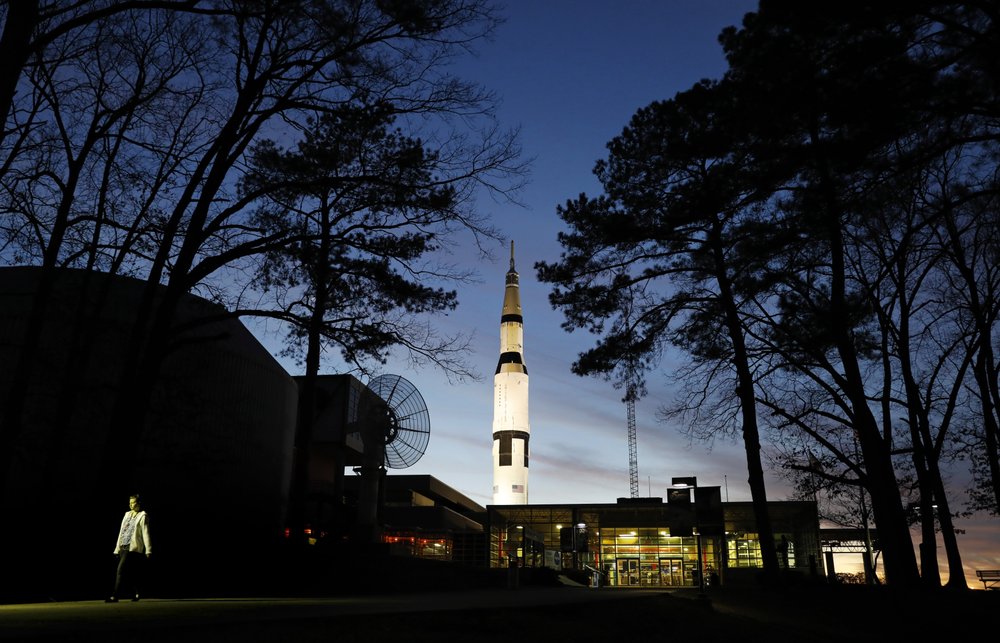
A longtime employee of the nation’s space agency has been named associate director of NASA’s Marshall Space Flight Center. Rae Ann Meyer, who began as an engineer in Marshall’s propulsion laboratory in 1989, will help manage the center’s 7,000 civil service and contract employees while overseeing development of the center’s business operations, a NASA statement said. She also will guide daily business decisions and supervise operational policy and processes. A native of Chattanooga, Tennessee, Meyer most recently worked as deputy manager of Marshall’s Science and Technology Office, a position she has held since 2019 managing a workforce of about 300 people. In the new role, Meyer will have responsibility across a range of areas including human spaceflight, science, and technology, the agency said. Republished with the permission of the Associated Press.
Army defends decision to close space, tech library

The U.S. Army is defending a decision to close its historic 57-year-old space and technical library at Redstone Arsenal. Army officials said it was a joint decision made by interested parties. The Redstone Scientific Information Center, or RSIC, closed its doors Sept. 30, Al.com reported. The center was established in 1962 by a charter between the Army and NASA. It was overseen by a board of directors made up of senior leaders and scientists at Redstone’s various missile organizations. Dr. Wernher von Braun and Maj. Gen. Francis “Frank” McMorrow agreed to build the original facility, which held information about rocketry and space science used to advance United States rocket programs. In a statement released this week, the U.S. Army Combat Capabilities Development Command Aviation & Missile Center, or AvMC, said the collection had become too big and expensive to maintain. “The sheer size of the collection – approximately 450,000 items – demanded an increase in space requirements,” the statement said. But it added decreased funding and resources have made it untenable to continue managing the library. AvMC said the library is now virtual and “consists of online-only access to scientific journals and e-books” plus electronic versions of technical documents. The e-documents will not be fully available until July 2021. As for the rest, NASA documents were returned to NASA and “excess library materials” will be offered to other Defense Department or government libraries first locally and then outside Huntsville. The Army’s statement said there are “no plans at this time to create another local library approaching the size and scope of RSIC for the entire Redstone Arsenal community.” NASA’s Marshall Space Flight Center said it “has acquired selected books and other documents from RSIC and is in the process of developing an on-site library, which will be a branch of the NASA agency-wide library system.” Marshall said its employees will “have access to RSIC’s online subscriptions through spring 2020.” After that, “the NASA agency on-line library will provide subscriptions for all centers including Marshall.” Republished with the permission of the Associated Press.
Martha Roby: Supporting STEM Education

Did you know that four billion people on the planet use a mobile phone? Over the past two years alone, 90 percent of all the world’s data has been generated. NASA plans to put man on Mars within the next 20 years, and self-driving cars are being tested around the world. Right now, we are living in the “future” we’ve talked about for generations, and our modern world requires a workforce educated in science, technology, engineering, and math, commonly known as STEM. Between the years 2000 and 2010, STEM-related jobs grew at three times the rate of non-STEM jobs. But, at the end of 2018, nearly 2.4 million STEM jobs went unfilled, because STEM education is not readily available for many students, especially in rural areas of our country. This is a critical problem, and I will briefly share some numbers to demonstrate just how important it is that we fix it. The number of STEM jobs is projected to increase by 13 percent by 2027, compared to nine percent for non-STEM jobs. Opportunities in computing, engineering, and advanced manufacturing will lead. The average median hourly wage for STEM jobs is $38.85, while the median earning for all other types of jobs in the United States is $19.30. The national average for STEM job annual salaries is $87,570, whereas the national average for non-STEM occupations is $45,700 – roughly half. The STEM fields provide fantastic career opportunities, but according to the National Math and Science Initiative, only 36 percent of all American high school graduates are ready to take a collegiate science course. According to the Department of Labor, universities in the United States are only expected to produce 29 percent of the number of graduates necessary to fill the 1.4 million vacant computer specialist job openings. The demand isn’t going to disappear, so it is our responsibility to expose the next generation of workers to STEM education so they will be equipped to fill these important jobs that will lead us further into the future we envision. I recently participated in a Commerce, Justice, and Science Appropriations Subcommittee hearing on STEM engagement, during which I had the opportunity to speak directly with experts from NASA and the National Science Foundation. Since we are experiencing such a severe workforce shortage, I brought up the issue of how we can generate increased interest in STEM-based jobs for the next generation. I also asked for an update about the programs currently in place to target underrepresented, rural areas across our country. I appreciated their time and thoughtful responses to my questions, and I was encouraged by what I learned. In Congress, I have and will continue to support strong funding for STEM education opportunities. We must do all we can to expose more young people to these increasingly important fields so that today’s workforce is ready for tomorrow’s jobs. Martha Roby represents Alabama’s Second Congressional District. She lives in Montgomery, Alabama, with her husband Riley and their two children.
Martha Roby: Celebrating fifty years of Alabama’s role in space exploration
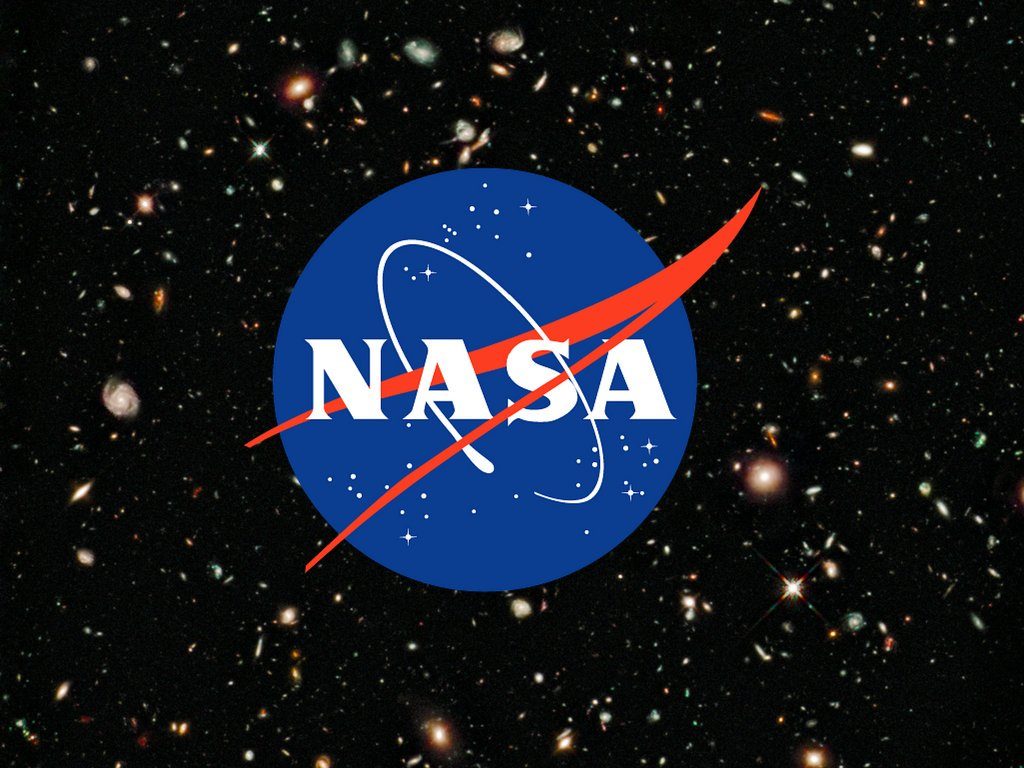
Fifty years ago, on July 20, 1969, Apollo 11 became the first spaceflight to place humans on the Moon when Commander Neil Armstrong and lunar module pilot Buzz Aldrin successfully landed the Apollo Lunar Module Eagle. Armstrong became the first person to ever step foot onto the lunar surface, and Aldrin joined him just minutes later. Command module pilot Michael Collins flew the command module Columbia alone in orbit while Armstrong and Aldrin were outside the spacecraft for more than two hours collecting lunar material to bring back to Earth. This fiftieth anniversary is a special milestone for Alabamians because Apollo 11 was launched by a Huntsville-built Saturn V rocket. For decades, many of us have heard stories from family members, friends, and neighbors who watched the launch in awe or played a role in executing this historic mission. To this day, traces of Alabama’s impact on American space exploration can be seen across our state and country. North Alabama is home to NASA’s Marshall Space Flight Center and continues to be a world leader in the space industry. This NASA center in Huntsville is very important to our state’s economy, as it supports approximately 22,000 jobs and provides $3.8 billion in economic impact. On top of this, more than half of Marshall’s contracts are sourced in-state and yield an additional $1.4 billion in economic activity. As Alabamians, we are rightfully proud of the role we play in American space exploration, and I’m confident we will accomplish even more in the near future. The Trump Administration has made it clear they are committed to supporting NASA’s growth and once again sending humans to the Moon. In mid-May of this year, NASA unveiled its Artemis program, which aims to put astronauts on the lunar surface in 2024 and give history the first female moonwalker. Preparations for Artemis have already begun, as NASA plans for the maiden flight of the Space Launch System (SLS) rocket as soon as next year. During my time in Congress, I’ve had several opportunities to meet with the companies who work on the SLS program, which is managed at Marshall in Huntsville. Notably, of the many jobs supported by NASA in Alabama, the SLS program accounts for 13,000 and generates $2.4 billion in economic output. The goals NASA hopes to accomplish with Artemis are significant, and NASA will need support from Congress to get the job done. For Fiscal Year 2020, NASA asked the Administration for an additional $1.6 billion in funding, and it is up to Congress to authorize the request. In my role on the House Appropriations Committee, I am honored to serve on the Commerce, Justice, and Science Subcommittee, which has jurisdiction over funding for NASA. I’m proud to have this opportunity on behalf of our state, and I will continue to push for strong support for space exploration. NASA has already achieved the unimaginable, and with continued support from Congress and the Administration, and with the help of hardworking Alabamians, we will make history again. In Congress, I will always fight for NASA’s legacy as we aim to build upon Alabama’s storied history and once again send man – and woman – to the Moon. As we celebrate the fiftieth anniversary of Apollo 11, I encourage you to share your stories and memories from this historic event with younger generations as we look towards the promising future of American space exploration. Martha Roby represents Alabama’s Second Congressional District. She lives in Montgomery, Alabama, with her husband Riley and their two children.
Aerospace, automotive summits heading to Birmingham this week

Birmingham is hosting a pair of business summits this week that showcase Alabama’s growing automotive and manufacturing industries, providing participants with high-level networking opportunities and one-on-one meetings. The conferences are the Aerospace Innovative Technology Summit (AITS), held May 7-9, and the Automotive Advanced Technology Summit (AATS), held May 8-9. Both events are taking place at the Birmingham-Jefferson Convention Complex, with 200 companies expected to participate. The Alabama Department of Commerce is among the sponsors of the summits, which feature workshops, presentations and business-to-business meetings. “The automotive and aerospace industries are major drivers of economic growth in Alabama, and these business conventions in Birmingham offer a pathway for companies from across the country and around the world to seek new opportunities and understand how their peers are utilizing and advancing the latest technologies,” said Greg Canfield, secretary of the Alabama Department of Commerce. “Besides companies from Alabama and multiple U.S. states, an international presence representing 11 different countries is here to participate,” he said. “These summits bring a focus on innovation, which is critical to growing and sustaining these manufacturing sectors and placing Alabama in a leading role for the latest technologies.” Focusing on innovation The Aerospace Innovative Technology Summit targets the aerospace, space and defense industries, all with a significant presence in Alabama. With a focus on new technologies being deployed in the sector such as 3D metal printing, digitalization of manufacturing and cyber security, the event aims to connect leading companies and participants in the sharing of ideas in the application and development of these innovations in their businesses. To kick off the aerospace conference, Canfield will provide an overview of the industry sector in the state. Other scheduled speakers include R.G. “Corky” Clinton Jr. of NASA’s Marshall Space Flight Center, Nick Bowman of GKN Aerospace and Jeff Chang of Lockheed Martin. The Automotive Advanced Technology Summit will focus on advanced manufacturing and new technologies at use within an industry growing rapidly in Alabama. Scheduled speakers include Mark Brazeal of Mazda Toyota Manufacturing USA, Tom Shoupe of Honda of America Manufacturing, and Brad Newman of ZF Chassis Systems in Tuscaloosa. Also speaking is Chuck Ernst, a former Honda Alabama executive who now serves as manager of the Alabama Robotics Technology Park, a unique training facility in Decatur. “It is an honor to have Birmingham chosen as the site for both of these conventions,” said Brian Jennings, vice president of economic development for the Birmingham Business Alliance (BBA). “It speaks to Alabama’s prominence in both the aerospace and automotive industries, and we look forward to bringing so many people together to foster continued growth of both industries.” Joining the BBA and the Department of Commerce in supporting the business conferences are the City of Birmingham, Jefferson County, the Birmingham Airport Authority, the Alabama Automobile Manufacturers Association and the Alabama Community College System. Mayor Randall Woodfin said Birmingham is the ideal location for the events. “Now, more than ever, Birmingham is focused on bringing high-quality technology jobs to our city. The summit gives a great chance to identify innovative partners that share our commitment to the next generation of manufacturing in the aerospace and automotive industries,” Woodfin said. This story originally appeared on the Alabama Department of Commerce’s Made in Alabama website.
NASA moves liquid hydrogen tank to Huntsville for testing
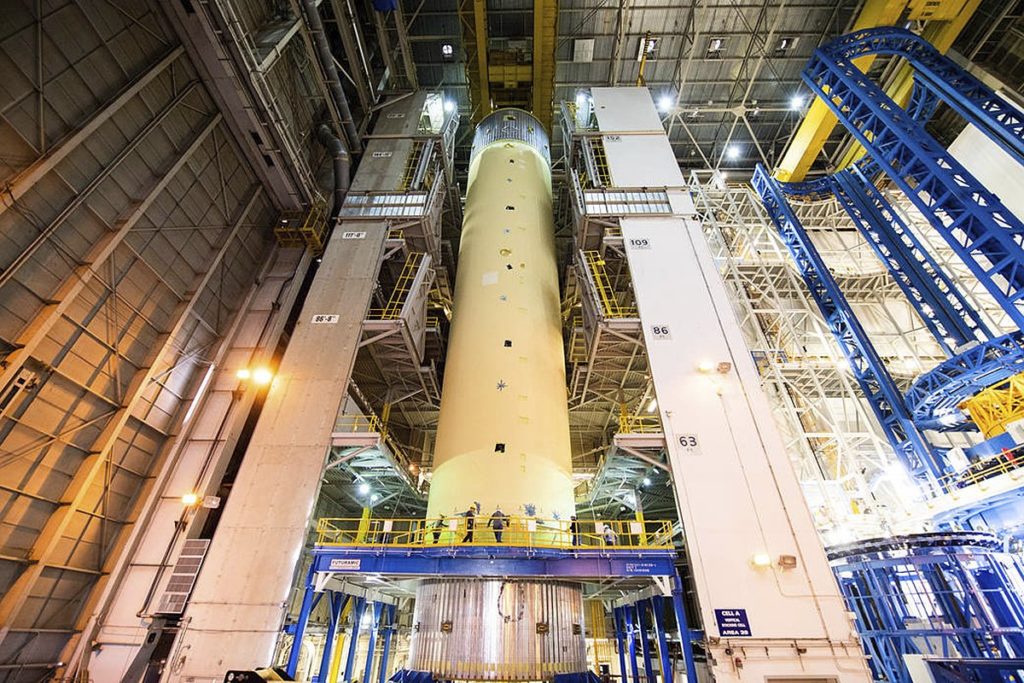
NASA is moving a massive liquid hydrogen tank to Huntsville, Alabama, for testing as part of its plans to eventually return to the moon. The 149-foot-long tank is part of the Space Launch System. The version moved Friday from NASA’s Michoud Assembly Facility in New Orleans is a test model, meaning it won’t actually be launched into space. It was moved — slowly and horizontally on its side — out of the factory where it was constructed to a barge called the Pegasus. From there it will travel up river to the Marshall Space Flight Center in Huntsville, where it will undergo strenuous testing designed to mimic the conditions of traveling into space. The testing is intended to make sure that the tank design can withstand the worst-case conditions, said Sam Stephens, test manager for the Space Launch System’s core stage. NASA also runs computer models to simulate all the conditions the tank might encounter, Stephens said. “We will test it until it fails, until it cracks,” said Stephens. “We are going to subject it to stuff we never want the flight vehicle to see.” The tank weighs more than 100,000 pounds, said Stephens. “It’s a pretty good size. It is the biggest tank we’ve ever built and it’s going to go on the largest launch vehicle we’ve ever built,” he said, referring to the U.S. NASA is moving a massive liquid hydrogen tank to Huntsville, Alabama for testing as part of its plans to eventually return to the moon. (Dec 14) The tank holds 537,000 gallons of liquid hydrogen that along with liquid oxygen will help propel the rocket and its cargo into space. The information learned from the testing will help scientists as they’re building future tanks for the Space Launch System. Republished with permission from the Associated Press.
Birmingham’s Southern Research tests parts 3-D printed in space for NASA
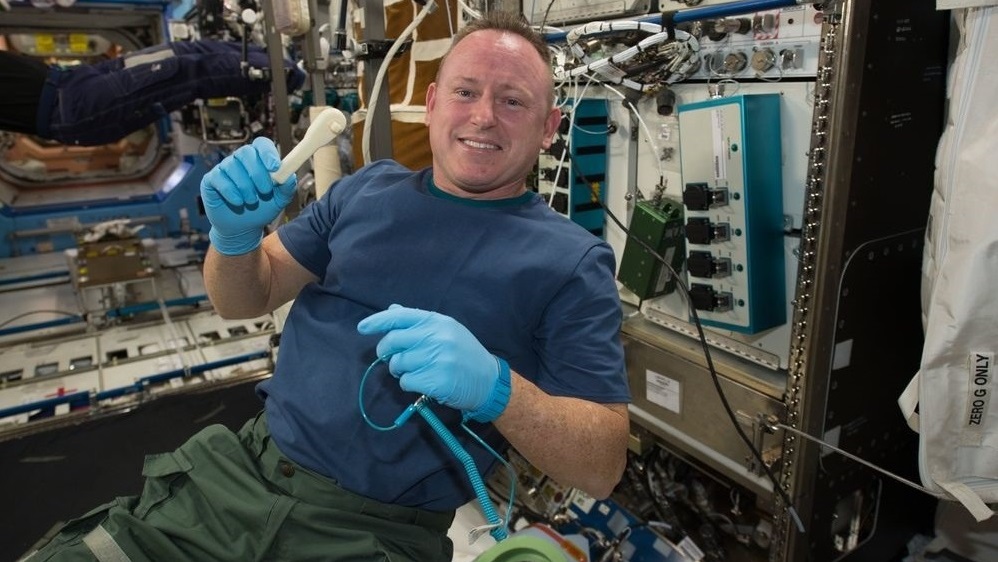
Could 3-D printers transform the International Space Station into a manufacturing hub and one day function as the heart of an on-demand machine shop in space that enables NASA to mount crewed missions deep into the solar system? Engineers at Southern Research are helping NASA’s Marshall Space Flight Center explore the capabilities of additive manufacturing technologies that have major logistics implications for the nation’s ambitious future space missions. “When NASA sends a crew to Mars, there can’t be a resupply mission. There is just no way to send them replacement parts if equipment breaks or a part fails in deep space,” said Madison Parks, an advanced mechanical engineer in Southern Research’s Engineering division. “On a mission to Mars, a 3-D printer will have to go with the crew. A part failing in orbit can be replaced after a resupply mission, but a resupply mission to a craft on the way to Mars would be too costly and may result in a loss of the mission. The crew will need to be entirely self-sufficient,” he said. Parks is working with Marshall’s engineers to come up with an answer to a critical question facing NASA’s plans for space-borne three-dimensional printing: Are parts manufactured in zero gravity going to behave just like those produced on Earth-bound 3-D printers? The ISS is already equipped with a 3-D printer. In 2014, California-based Made in Space sent a polymer printer to the space station, followed two years later by a more advanced device. It’s been used to print plastic tools used around the station, along with other non mission-critical items. To help NASA understand the properties of materials printed in an in-space 3-D polymer printer, Parks and his team are testing specimens of materials printed in space and comparing them to similar specimens produced on Earth. Along with tension and compression tests on these materials, Southern Research will be performing digital image correlation (DIC). DIC is a non-contact optical method that employs tracking and image registration techniques for accurate 3-D measurements of changes on the surface during a mechanical or thermal loading. Measuring full-field displacements and strains during the mechanical tests will help engineers understand the material behavior and overall effect of print passes and how they relate to zero-gravity 3-D printing versus Earth 3-D printing. “For safety reasons, NASA has to understand the materials before they use them,” Parks said. “You have to understand where and how these parts, which are manufactured in space, can be used. Doing otherwise could lead to parts and systems failing prematurely.” Southern Research’s Engineering division, which specializes in analyzing how materials perform in extreme environments, has collaborated with NASA for decades. Its engineers analyzed the thermal and mechanical properties of potential heat shield materials for the Apollo program and provided crucial support for the Space Shuttle, particularly in the “Return to Flight” missions after the Columbia accident. Today, Southern Research is involved in the Space Launch System, the massive rocket NASA is developing for planned Mars missions. For NASA, three-dimensional printing offers a fast and inexpensive way to manufacture parts on a spacecraft, exactly when they’re needed. That’s a huge benefit to long-term missions and has the potential to fundamentally change how NASA plans logistics operations for human spaceflight. “Right now, there are thousands of parts for the International Space Station sitting in NASA storage, and most of them will never be used,” Parks said. “But they have to have all these parts on hand to launch to the ISS in case something breaks or fails.” “What Southern Research and NASA are working together on is a foundational effort with the goal of the ISS crew being able to print the parts they need as they need them, which will help the astronauts accomplish their missions,” he said. This story originally appeared on Southern Research’s website. Republished with permission from the Alabama NewsCenter.
Huntsville’s Mark McDaniel appointed to NASA Advisory Committee
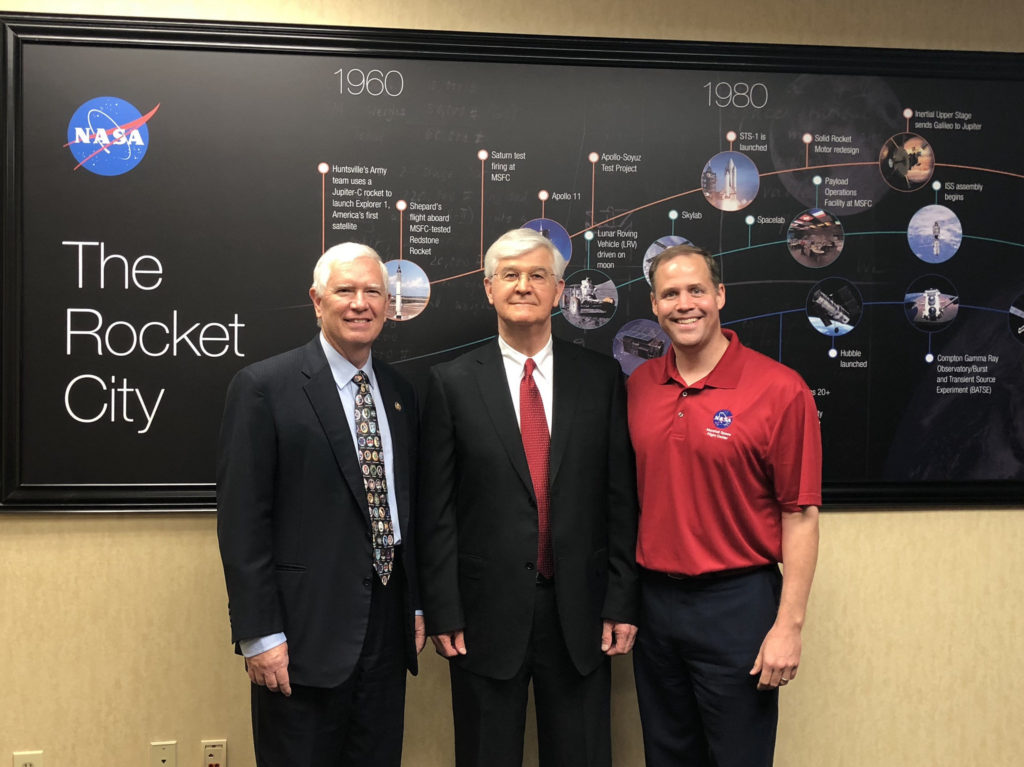
NASA Administrator Jim Bridenstine announced the appointment of Huntsville’s Mark McDaniel to the Human Exploration and Operations Committee of the NASA Advisory Council (“NAC”) — NASA’s highest civilian advisory board. Bridenstine tweeted the appointment on Wednesday while visiting the Rocket City. “I’m proud to announce the appointment of Mr. Mark McDaniel to the Human Exploration and Operations subcommittee of the NASA Advisory Council (NAC). His legal and space expertise will serve our agency well,” he wrote. I’m proud to announce the appointment of Mr. Mark McDaniel to the Human Exploration and Operations subcommittee of the NASA Advisory Council (NAC). His legal and space expertise will serve our agency well. pic.twitter.com/hxOxpal3Mg — Jim Bridenstine (@JimBridenstine) August 15, 2018 Alabama 5th District U.S. Rep. Mo Brooks recommended McDaniel to Bridenstine, a personal friend and former House colleague of Brooks, to be a part of NAC. Brooks praised the appointment saying, “Mark McDaniel’s experience and qualifications make him an excellent choice to advise NASA on its future missions. I congratulate Mark on his appointment and have confidence he will be a productive and constructive member of the committee.” “I greatly appreciate my friend NASA Administrator Jim Bridenstine for his thoughtful consideration in appointing Mark McDaniel. Jim’s leadership at NASA has been exemplary, and I am glad he took time out of his busy schedule to announce Mark McDaniel’s appointment in Huntsville,” Brooks continued. McDaniel said he is honored by Brooks’ recommendation. “It is a great honor for Congressman Brooks to have recommended me for the Human Exploration and Operations Committee of the NASA Advisory Council, and I look forward to serving NASA in this important position,” said McDaniel. “I have been friends with Mo for many years, and I have always admired him for his integrity and courage, and especially for what he does for NASA and national defense.” McDaniel, no stranger to NASA Previously, NASA Administrator Daniel Goldin appointed McDaniel to the NASA Advisory Council in October 2000 and NASA Administrator Sean O’Keefe reappointed McDaniel to the Council in November 2002 and November 2004. During McDaniel’s tenure on the NAC, President George W. Bush announced the Moon, Mars, and Beyond Initiative which set the Nation on a more aggressive pace for Space Exploration. On January 26, 2007, McDaniel received the NASA Public Service Medal for his “Leadership and Council to America’s Space Agency, his advocacy of Human Space Flight and Exploration and dedication to the Aerospace Community at large.”
Mo Brooks congratulates Decatur-based company’s successful solar probe launch
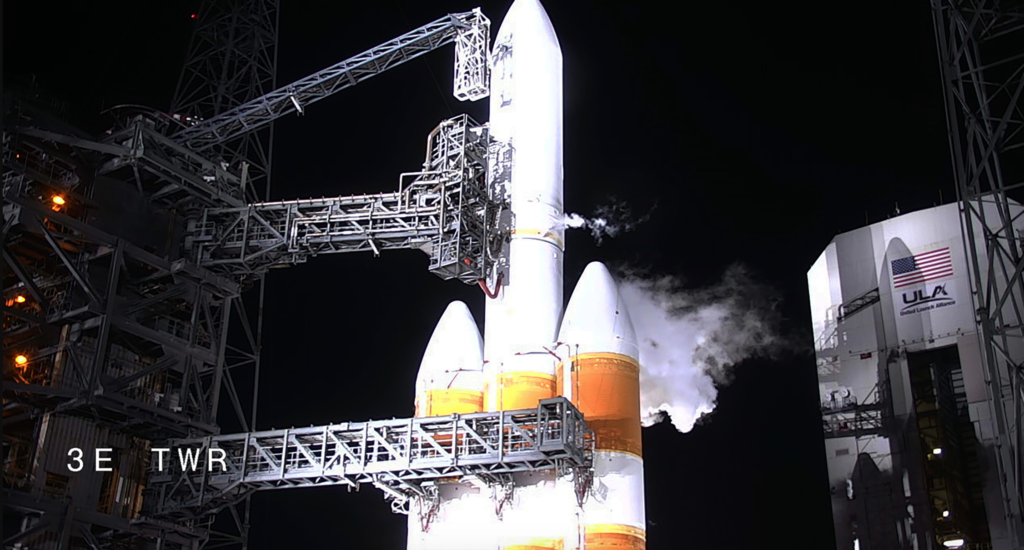
A Decatur-based rocket building company United Launch Alliance (ULA) announced the successful launch of the Delta IV Heavy rocket carrying NASA’s Parker Solar Probe on Saturday. Alabama 5th District U.S. Rep. Mo Brooks congratulated ULA on a successful launch on Facebook, saying: “Congratulations to Decatur-based United Launch Alliance on successfully launching the #ParkerSolarProbe, which will study the sun’s outer atmosphere and space weather. Yesterday’s launch continues ULA’s unbroken streak of successful launches and is a remarkable testament to the great work of ULA’s talented employees who built the rocket in Decatur. I look forward to all that we will learn from the probe as it transmits information back to Earth on its journey to the sun’s orbit.” Brooks has long been a supporter of national space programs, and is the founding member of the The House National Aeronautics and Space Administration (NASA) Caucus, dedicated to bringing attention to space agency’s economic and national security importance and serve as a forum to educate policymakers on current NASA initiatives. The Parker Solar Probe The Parker Solar Probe will be flying through the sun’s atmosphere, getting closer to the sun’s surface than any other spacecraft in history. “Parker Solar Probe will revolutionize our understanding of the Sun’s corona. Facing brutal heat and radiation, the spacecraft will fly close enough to watch the solar wind speed up from subsonic to supersonic, and fly through the birthplace of the highest-energy solar particles,” NASA reported. NASA used ULA’s Delta IV Heavy rocket to launch the space probe out of the Cape Canaveral Air Force Station in Florida this weekend, marking the companies 37th launch of the Delta IV rocket and the 129th successful launch since the company was formed in 2006. “The unique requirements of this mission made the Delta IV Heavy the perfect launch vehicle to deliver Parker Solar Probe into orbit with the highest precision,” Gary Wentz, ULA vice president of Government and Commercial Programs said in a press release. “Congratulations to our team and mission partners, we are proud to launch this exceptional spacecraft that will provide invaluable scientific information benefiting all of humankind.”


